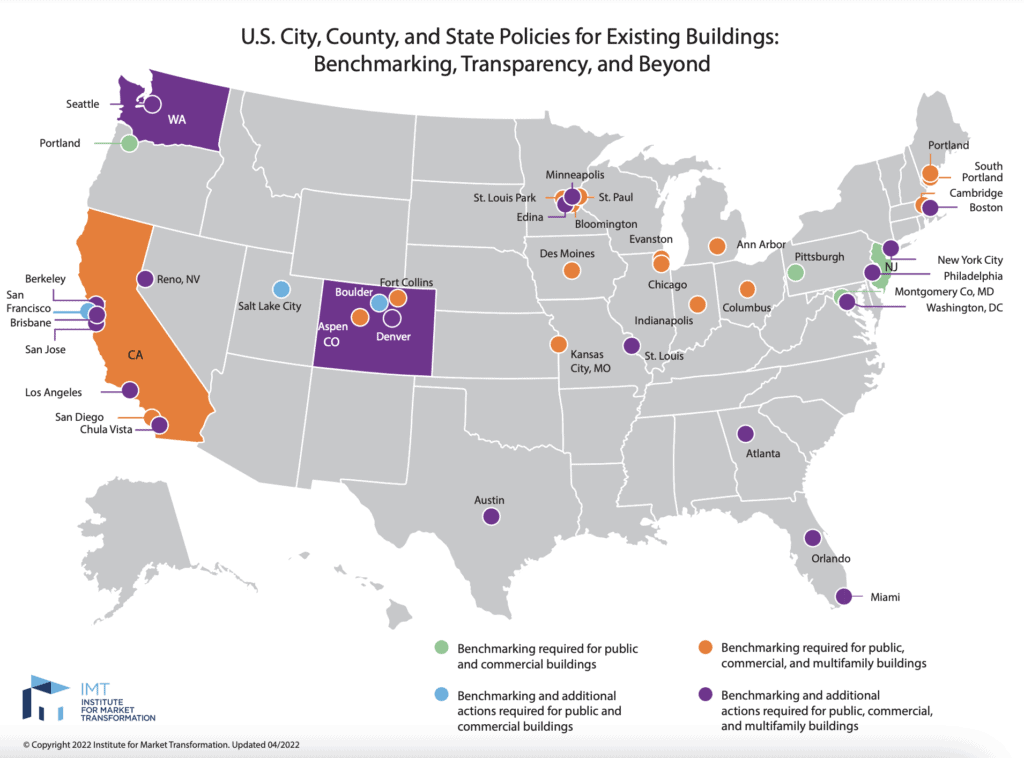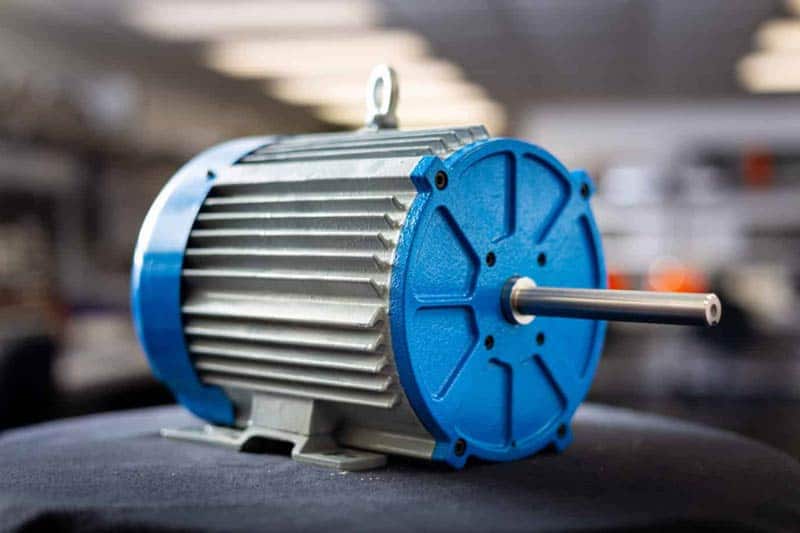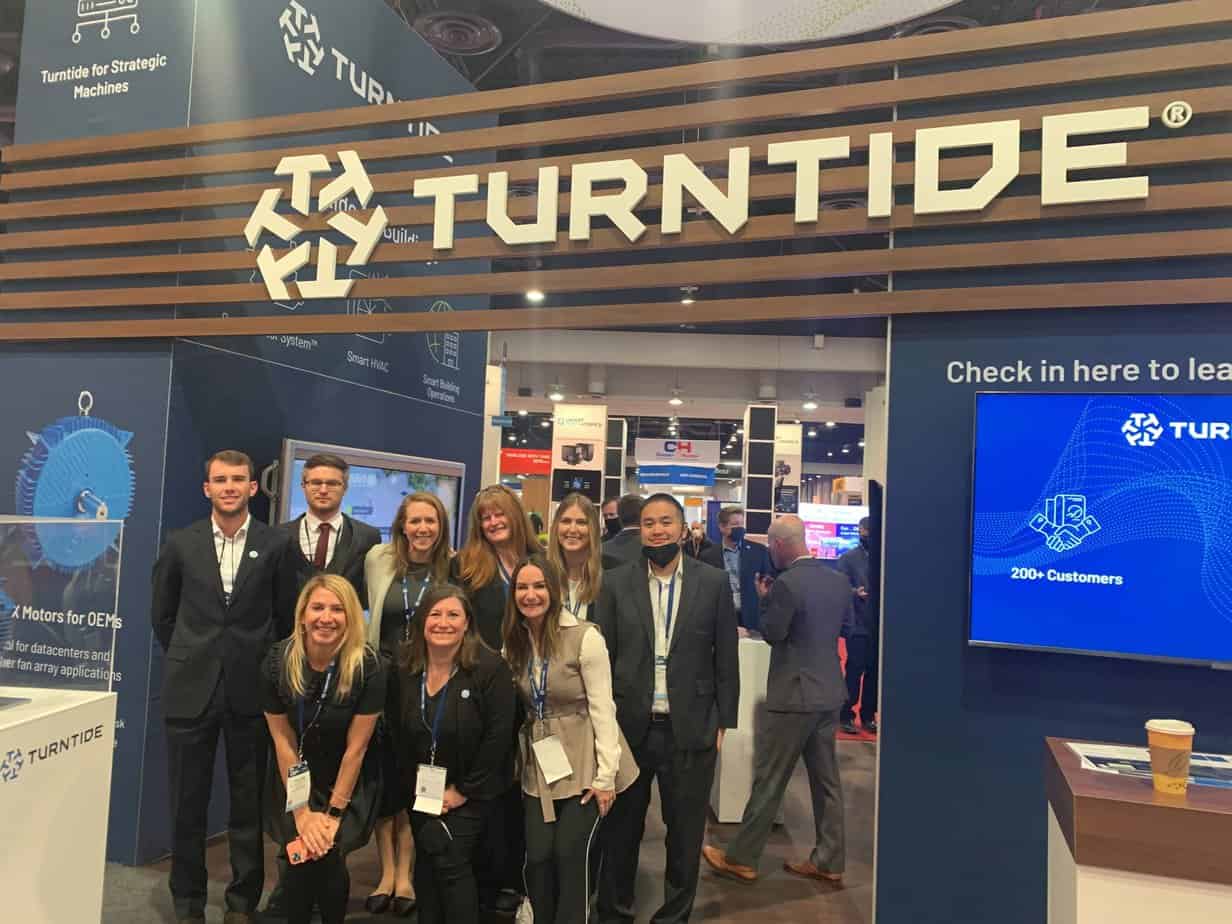The twin crises of climate change and COVID-19 are colliding to hit small to mid-size building owners and operators particularly hard.
State and local policies designed to lower emissions and create more efficient buildings are proliferating even for buildings as small as 10,000 square feet. Meanwhile, landlords and retailers are recovering from a bruising pandemic, hoping to convince tenants and customers it’s safe to work and shop indoors again.
Small and mid-size building owners and operators need energy-efficient solutions that go beyond LED lighting and smart thermostats. They need comprehensive solutions that can help them future-proof their buildings; comply with existing building performance standards; meet the IAQ demands of their employees, tenants, and customers; and even drive revenue through utility and grid programs.
Policies Affecting Small and Mid-size Buildings
Governments have a number of policy tools to enforce the decarbonization of new buildings, including enhancing building codes and appliance standards and even banning onsite fossil fuel use in new construction. But in order to hit aggressive emissions targets, officials must do more than wring emissions out of new buildings since, according to ACEEE, the nation’s building stock typically turns over only about one to two percent each year.
In many regions of the country, state and local governments looking to cut emissions are developing policies aimed at decarbonizing existing buildings. These policies typically fall into three categories: building energy benchmarking, building performance standards and building emissions laws.

Building Energy Benchmarking Laws
While benchmarking policies alone do not require building owners to implement any changes other than collecting building performance data, they do lay the foundation for further investments in building efficiency. Generally, building energy benchmarking laws mandate commercial building owners uniformly and consistently measure and publish building energy performance data.
Benchmarking programs are the most common of these policies and proliferating in cities and states all over the country. And while some of these policies do not apply to commercial buildings smaller than 50,000 square feet, many begin regulating buildings at 20,000 square feet and San Francisco’s ordinance sets its floor at 10,000 square feet. As more cities and states evaluate their options to substantially reduce emissions, building energy benchmarking policies will continue to spread.
Benchmarking policies, however, do have considerable benefits for building owners. They help shed light on poorly performing buildings while avoiding financial penalties. Building owners can use the data to make smart investments in their properties to save money and improve occupant comfort.
Building Performance Standards
Unlike benchmarking laws, building performance standards not only require building owners to measure their buildings’ energy use, but to meet specific energy use targets, as well. These laws are not yet widespread but are growing increasingly popular with local policy makers because they can cover large segments of existing buildings.
Washington, D.C.’s Building Energy Performance Standard (BEPS), for example, requires buildings to reduce their energy use profile to the median Energy Star score or equivalent for that building type. The standards are renewed every six years, which, assuming buildings are complying, should lower the median Energy Star score for each building type.
While Washington D.C.’s BEPS offers several pathways to compliance, it also contains financial penalties for non-compliance. The maximum penalty is $500,000 for buildings between 25,000 and 50,000 square feet and $250,000 for those under 25,000 square feet. These are serious financial repercussions for small and mid-sized buildings; owners need to be aware of where their properties stand and how to invest to avoid needless financial penalties. These investments, however, are not merely to avoid hefty fines; they’re good business, too. As energy prices rise, efficiency projects will continue to return money straight to companies’ bottom lines.
Building Emissions Laws
Where building performance standards focus on reducing energy use, building emissions laws seek to decrease carbon emissions. The difference may seem nuanced, but it has major implications for onsite fossil fuel use.
Buildings that use natural gas or heating oil to provide comfort and water heating are under pressure to substantially reduce or eliminate that usage when complying with building emissions laws. These regulations are accelerating the trend toward decarbonizing space heating with heat pumps, which use electricity to provide heating and cooling.
The two most prominent building emissions laws are Boston’s Building Energy Reporting and Disclosure Ordinance (BERDO) and New York City’s Local Law 97 (LL97). Boston’s BERDO mandates that all buildings 20,000 square feet or larger reach net zero carbon emissions by 2050. The penalties for missing these emissions caps are up to $1,000 per day for larger buildings and $300 per day for smaller ones.
Likewise, New York City’s LL97 is likely to push building owners toward decarbonizing with heat pumps by setting increasingly stringent emissions limits on buildings of 25,000 square feet or more starting in 2024. There are flexible paths to compliance, including purchasing carbon offsets, prescriptive measures, and onsite renewables. The tradeoff for such flexibility is clear: a fine of $268 per ton of carbon dioxide emitted over the cap. Fortunately, New York City’s utility, Consolidated Edison, has some very attractive rebates available for mid-sized buildings, which can help offset the initial cost of these projects. And, after a relatively short payback period, these projects return money to their owners.
Energy Solutions
Unlike larger buildings, which can significantly reduce energy use intensity, or EUI, and save money with one or two impactful measures, owners and managers of smaller buildings need to seek out more comprehensive approaches to efficiency and carbon reduction. Fortunately, increasing access to digital connectivity and innovations in motor technology have made more comprehensive systems available and financially feasible even for small buildings.
Rooftop Unit Efficiency
Many of these buildings under 50,000 square feet are heated and cooled with packaged rooftop units (RTUs), which combine a traditional air-conditioning system with a natural gas-fired furnace. According to the U.S. According to the Department of Energy, 40 percent of energy used in commercial buildings is from HVAC equipment and more than 30 percent of that energy is wasted in the average commercial building.
Typically, the supply fans in these RTUs run at constant speed when they’re heating, cooling or ventilating. There is a lot of energy to be saved by modulating the speed of this motor to match actual demand in the building. And, as indoor air quality (IAQ) becomes increasingly important to maintain occupancy, more outdoor air is going to be brought into the building, driving up energy costs as that air needs to be conditioned and humidity-controlled.
Taking advantage of the substantial utility rebates available to upgrade the motor in RTUs is crucial to maintaining costs as tenants, employees and customers return to indoor environments.
Cloud-Based Building Management Systems
Legacy building management systems, or BMS, are often clunky and cost prohibitive for smaller buildings. Cloud-based technology, however, has significantly improved the technology and made it available to smaller buildings and those operating portfolios of retail locations.
Remote commissioning, predictive maintenance, fault detection, set point control, and staging are features once reserved for large property managers and owners to which smaller operators now have access. Myriad types of sensors are also available to provide insights into room occupancy, carbon monoxide levels, IAQ, and more. In addition, combining this type of BMS with the data emitted from an advanced RTU controller gives a building manager deep insight into her property from the convenience of a smartphone. The U.S. DOE estimates that utilizing predictive analytics accounts for a 40 percent savings over reactive maintenance.
Utility and Grid Services
These technologies not only help owners of small and mid-sized buildings save energy and money and better manage their assets, they can help drive revenue, as well. Once a building owner has the ability to effectively match heating and cooling load to demand and to remotely manage a portfolio of locations, they can take advantage of grid services like demand response programs offered by PJM and other electric grid operators.
Distribution utilities offer demand response programs to most residential and commercial customers, although they are not particularly lucrative. Regional electric grids like PJM or ISO New England offer substantially more to shed load during peak hours. And, as more buildings decarbonize and space heating is added to the electric grid, these demand response events will eventually shift to the winter months, as well.
Unlike in the past when LED lighting projects were the only option for smaller buildings looking to save energy, owners of these buildings now have a more comprehensive set of solutions available to them. Combining smart RTU controls with cloud-based monitoring allows building owners not only to optimize their properties’ performance, but also take advantage of new revenue opportunities. Grid services stemming from system connectivity could become more prevalent and more lucrative as more load is added to the electricity grid at various times of the year. Comprehensive retrofits position these properties to comply with local building regulations as well as drive new revenue opportunities.
What's New
Take the Next Step
Talk to our team to see how we can help you save energy and boost your bottom line.
Schedule Consult





